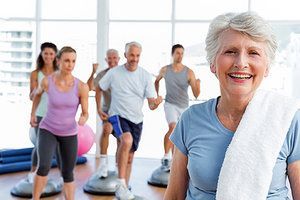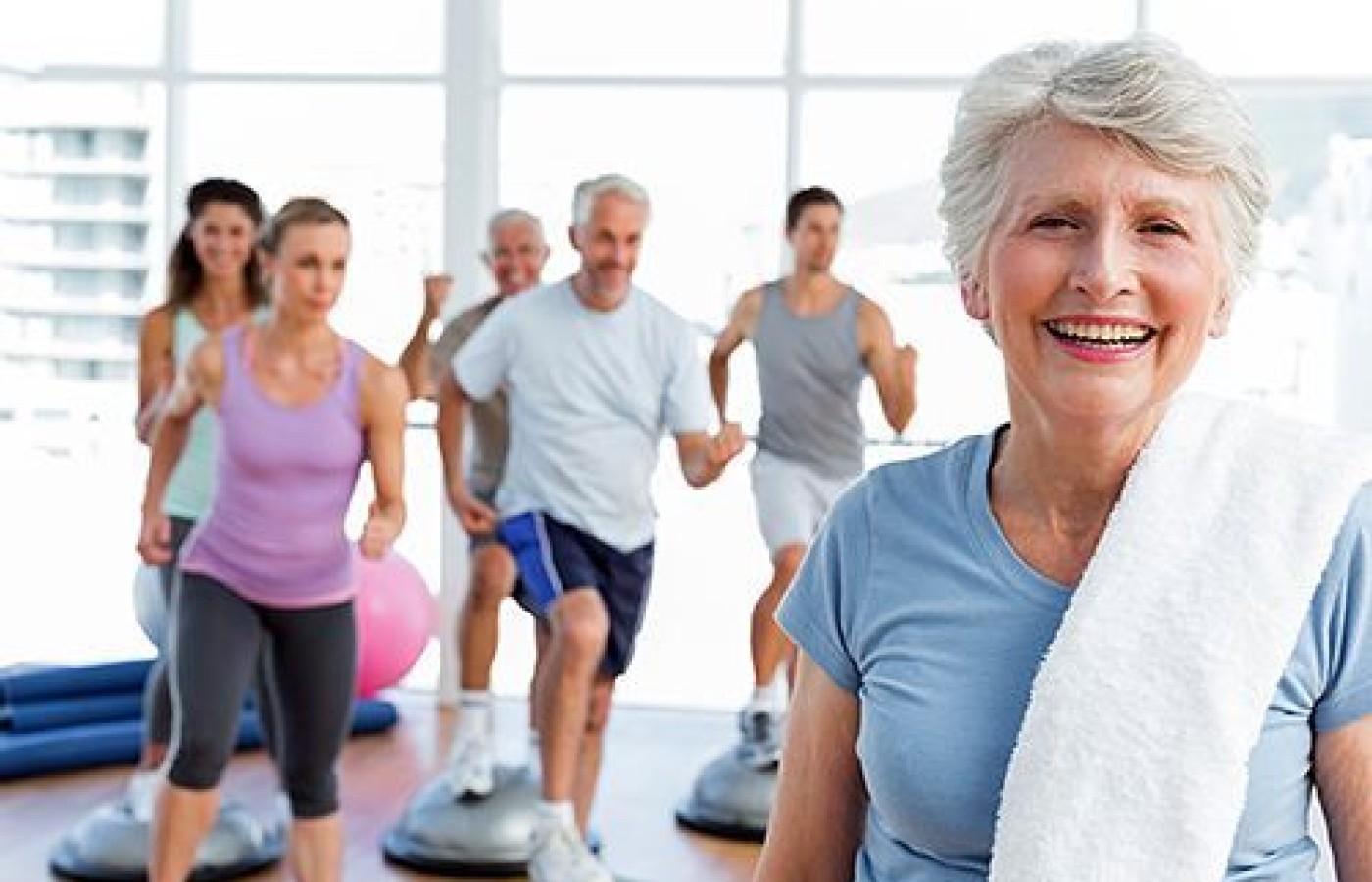Whether you accept it, avoid it or live somewhere in between, insurance coverage has become a defining issue for our profession. Patients increasingly expect to use their benefits, practitioners want to be compensated fairly for their time and expertise, and the system itself remains – at best – fragmented. The encouraging news is that coverage has expanded in meaningful ways. The challenging news is that reimbursement, across the board, remains inadequate.
Exercise Recommendations for Healthy Aging
Aging is inevitable, but how you age is not. Common physical signs of aging include decreased muscle mass, decreased muscular power, increased body fat, and decreased aerobic (lung) capacity. Beginning in the fourth decade of life, adults lose 3-5 percent of muscle mass per decade; after age 50, the decline increases to 1-2 percent per year. However, with proper exercise recommendations to our patients, we can slow down the rate of loss from one year to the next.
My message to patients is that exercise is a powerful intervention and can be at least as effective as prescription drugs in preventing age-related health issues. Patients have the potential to get stronger, decrease their risk of osteoporosis, and preserve muscle mass and lung capacity. I use exercise in my practice to help balance muscles to improve posture, decrease pain, manage weight, improve muscle and bone strength, improve balance and stimulate hormones. I hope to encourage as many patients as possible to engage in healthy-aging exercises.
Basic Recommendations
For patients who are already engaged in some form of an exercise program, I encourage them to experiment with these recommendations, applicable to your patients as well:
- Advise patients to perform exercises that use the most muscle mass. I still like squats, deadlifts, lunges with a pull (row) move and push-ups.
- Suggest they progress to using heavier weights. Mix up the routines using 15-20 reps with light to moderate weights; and try at least six reps that they can do with 85 percent of their maximum one-rep lift on any given exercise. For strength-building, I recommend a weight that can only be lifted 6-8 reps per set.
- Recommend they be more intense during their physical activity by adding a variety of movement exercises, and changing up the sets and repetitions.
- Suggest they "periodize" workouts, and help them write new programs with new goals. Basically, they should change workouts every 6-10 weeks, rather than doing the same thing month after month. It might be as simple as suggesting they keep rest periods short (10-30 seconds instead of 60 seconds) for four weeks. If the goal is to increase muscle mass, it will require heavier weights and it will be difficult to do a high volume; therefore, a longer rest period will be required.

How Long? How Vigorous?
I ask patients and doctors, "What is the magic number of minutes we need to exercise for the most health benefits?" The answer I hear most often is 30 minutes a day for five days a week (or 150 minutes a week). I find patients don't know they don't have to expend excessive amounts of time and effort to get the health benefits they're after.
My experience after being in practice for 30 years suggests it boils down to consistency. A consistent exercise routine gives my senior patients comfort and health benefits. According to the National Heart, Lung, and Blood Institute, moderate-intensity exercise can be something as simple as playing touch football for 45 minutes, raking leaves for 30 minutes, or shoveling snow for 15 minutes.
Xifeng Wu, MD, professor and chair of the University of Texas MD Anderson Cancer Center's Department of Epidemiology, suggests just 15 minutes a day of moderate-intensity activity can extend people's lives by three years. "Exercising at very light levels reduced deaths from any cause by 14 percent."1-2 A little exercise, done regularly, will go a long way in extending lifespan and quality. I personally prefer working out at home rather than going to a gym, because I save time.
Dr. Jarett Berry discusses how our physical activity levels in midlife help prevent diseases including heart disease, stroke, diabetes, arthritis, even some cancers, and cognitive conditions in our 80s. He notes, "It has been known for decades that people who are more fit live longer, but what has been unclear is that people who are fit live better." He adds, "If you increased your fitness by 20 percent, you would decrease your disease burden by 20 percent."3
His research, published in the Sept. 24, 2012 issue of JAMA Internal Medicine, suggests people with a higher level of midlife fitness spend a greater proportion of their final five years of life with a lower burden of chronic disease, suggesting an improvement in not only quantity, but also quality of life.4
In Circulation, May 2014, Soares-Miranda, et al., note that seniors who maintain or boost their physical activity levels are less likely to suffer a heart attack. They examined heart monitor data collected from 985 older adults, average age 71, over five years. The more physical activity the participants did, the better their heart rate variability.5
Heart rate variability refers to differences in the time between one heartbeat and the next. Exercise improves the electrical well-being of the heart and reduces the risk of heart rhythm problems. I think what we are learning is that a decreased amount of physical activity (or excessive amounts of physical activity) negatively affect our lifespan and quality of life. My minimum recommendation for exercise is 10 minutes a day (striving for intense exercise). Some people are exercising too much (100s of minutes a day) and do not get enough recovery, and these people may have a shorter life expectancy.
The Power of Walking
With patients who already walk for exercise, I instruct them to start interval walking. Simply start out walking at a regular pace, then walk fast, walk at a regular pace again, and repeat. For example, a 50-year-old female patient walks 30 minutes, five days a week, as her exercise. She has been doing this for the past several years and thinks she is continuing to get all of her health benefits from this. I grasp she is doing 30 minutes of exercise, but rather than just walk at a normal pace, she could enhance that 30-minute program by learning how to perform a five-minute dynamic warm-up.
To that end, I taught her to add the following to her daily routine (about 20-30 seconds of each; approx. five minutes total) prior to each walk: ankle mobility (three planes), leg swings, hip circles, split squats, hamstring stretch kicks, standing adductor stretches, standing knee to chest, arm circles and swings, gluteal max / med activation, and balancing on one leg on a pad.
I also suggested that after the warm-up, she could walk a block at her regular pace, then walk "all out" for another block, then walk at her regular pace for the next block, and repeat the fast pace for the block after that. I instructed her to continue this for 20 minutes and then spend the final five minutes performing a cooldown with specific stretches to target her tight hip flexors (related to sitting for most of her work day).
It's never too late to add more intensity. I can turn an "ordinary" walk with my Labradoodle dog into an extraordinary one by carrying a 10-15 lb. kettlebell in one hand. I complete a set of 15-20 reps of overhead presses in one arm (leash in the other hand) and then switch to the other arm for the next 15-20 reps. I rest from the presses as needed, but continue walking. In a 30-minute walk, I can manage about 200-300 overhead presses.
In the same 30-minute time frame (ordinary dog walk) I can get an upper-body workout, add more cardio, and burn more calories than by walking only. People give me a funny look when I do this type of walk, but the benefit from a kettlebell-walk workout fits my lifestyle just fine. If I stop and talk to a neighbor or my dog stops and plays with another dog, I include moves to improve my balance and reduce the risk of falling. I do one-leg-stands (practicing my short foot), I walk a straight line as if I'm on a balance beam, or I practice walking heel to toe. If Phoenix (my dog's name) is on the leash, he provides me with great perturbations!
Other Tips: We should all advise our patients to wear a step counter, even for just a week. We (and they) need an objective number to use as a baseline for improvement. And suggest patients climb stairs instead of taking an elevator; or swing their legs back and forth while sitting. Swinging the legs improves blood flow and will help prevent muscles/limbs from getting rigid.
30-Day Challenge
I recently gave myself a 30-day exercise challenge. My goal was to perform 300 push-ups and 300 kettlebell swings in a 40-minute exercise session. The 40 minutes includes my warm-up and cooldown. I set the timer on my elliptical for 40 minutes. I do a dynamic warm-up for about 5 minutes and then perform sets of 30 push-ups and 30 swings (each set takes approximately two minutes). After each set, I get back on the elliptical as my "rest" phase. The push-ups work my upper body; the swings get the posterior chain and are a high-cardio effort. The elliptical works the legs and serves as low-cardio effort.
At the start of the challenge, I was able to do 150 total push-ups and 150 swings without overdoing it. Over the next 30 days, my elliptical "rest" periods had to become shorter (a minute or two) and I would repeat the 30 reps of push-ups and swings for 10 sets until I reached my goal of 300 each.
If you have ever taken one of my courses, you know I usually tell participants my "happy practice" would be teaching patients movement, writing exercise programs for healthy aging, and implementing weight-loss programs. But I am known for treating chronic pain patients and 99 percent of my new patients still come in for pain-relief strategies. The difference now from 20-30 years ago is that new patients know I use exercise as medicine and I expect them to exercise at home. What's stopping you from doing the same in your practice?
Take-Home Points
- The benefits of physical activity persist to the end of life.
- Get your patients to be more intense while doing exercise.
- We lose function much faster than we regain it – so help patients preserve function for a lifetime.
References:
- Wen CP, et al. Minimum amount of physical activity for reduced mortality and extended life expectancy: a prospective cohort study. Lancet, Oct 2011;378;9798:1244-53.
- "15 Minutes of Moderate Daily Exercise Lengthens Life, Taiwanese Study Finds." Science Daily, Aug. 17, 2011.
- Barnett S, Shroff S. "Secret to Active 80s? Fitness-Heavy 40s." ABC News via "Good Morning America," Aug. 27, 2012.
- 4. Willis BL, et al. Midlife fitness and the development of chronic conditions in later life. JAMA Internal Med, Sept. 24, 2012;172(17):1333-40.
- Soares-Miranda L, et al. Physical activity and heart rate variability in older adults: The Cardiovascular Health Study. Circulation, published online first May 5, 2014.



